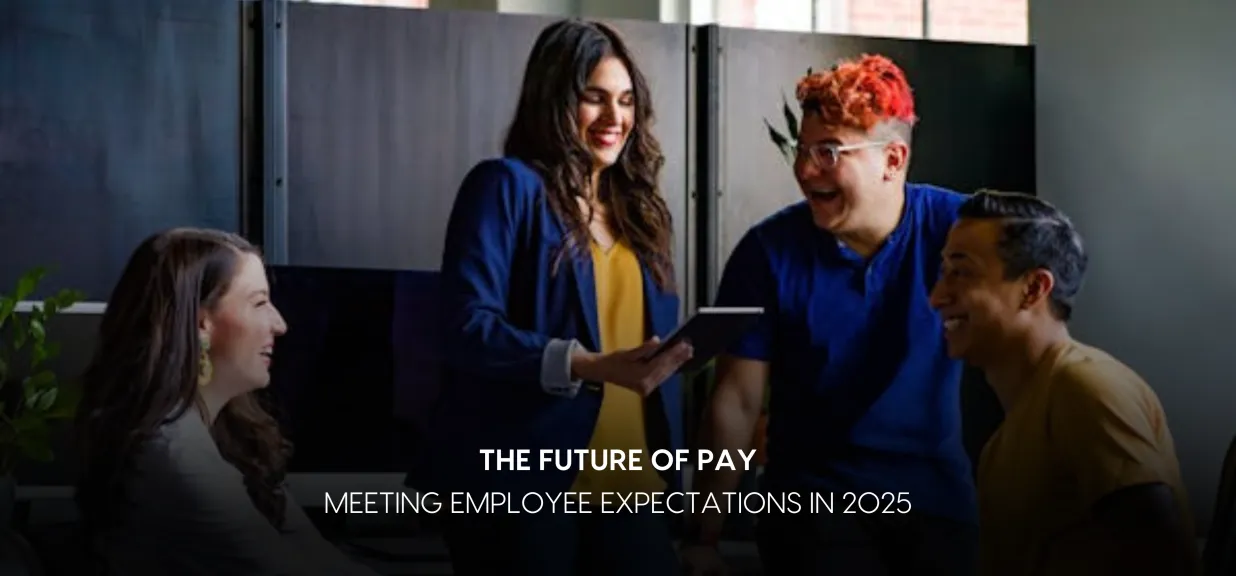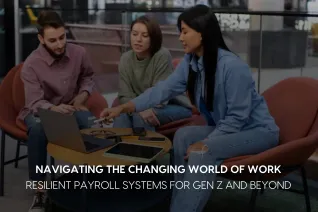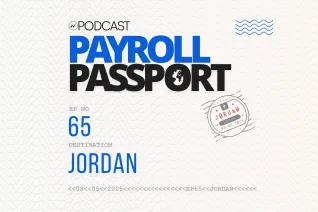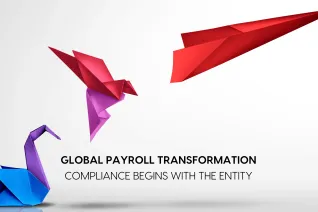What Today’s Payroll Teams Must Know About Employee Expectations

“After remaining stagnant for 75 years since the advent of elementary payroll systems, the payroll industry is finally evolving. Expect innovations like autonomous global payroll, on-demand pay, digital payment platforms, and maybe even cryptocurrencies. The landscape will change rapidly.” — Ashok Bildikar, Chairman, Neeyamo
As Ashok Bildikar wisely stated in an interview, in 2025, employees expect more than a paycheck that arrives on time; they want full transparency, flexible pay options, personalized experiences, and greater control over how and when they’re paid. A recent EY survey of 400 Chief Human Resource Officers (CHROs) and Heads of Talent worldwide reveals that 92% of employers say the growing demand for international workforce mobility is placing additional strain on HR and payroll functions. Meanwhile, 87% report that the surge in flexible and hybrid work arrangements is intensifying the pressure on payroll operations.
For payroll teams, this means the stakes have never been higher. Modern payroll must be accurate, accessible, and designed with the end user in mind. It’s no longer enough to be invisible unless something goes wrong; payroll is now a key differentiator in attracting, engaging, and retaining top talent.
In this blog, we’ll explore why it’s crucial for payroll teams to truly understand employee expectations in 2025 and how fulfilling those expectations is essential for building trust and increasing retention.
Why Employee Expectations Should Shape Your Payroll Strategy
To truly understand what employees want, payroll teams need to go beyond compliance and accuracy and tap into the psychology of employee experience. This is where Organizational Justice Theory becomes especially relevant. Organizational justice refers to how employees perceive fairness within their workplace, specifically, whether they believe that the organization's processes, decisions, and behaviors are fair and equitable. Researchers have broken this concept down into distinct types of justice, including:
- Distributive justice - Is the pay fair and aligned with effort or role?
- Procedural justice - Is the payroll process transparent, consistent, and reliable?
- Interactional justice- Am I treated with respect and clearly informed when issues arise?
- Informational justice - Whether organizations share reliable and adequate information.
When payroll falls short through delays, errors, or poor communication, it disrupts these dimensions of fairness, which can erode trust and lead to disengagement. Conversely, a payroll system that feels fair, responsive, and human-centered contributes significantly to a positive employee experience. Understanding this psychological foundation helps payroll teams move from being just operationally efficient to becoming key enablers of employee satisfaction and loyalty.
ACCESS NOW | Paychecks and Purpose: The Human Stories Behind Global Payroll
How Payroll Teams Can Rise to Employee Expectations
Today’s employees bring consumer-grade expectations into the workplace, and payroll is no exception. In 2025, employees are not just passive recipients of pay; they are active participants in shaping how, when, and where they get paid. Here’s what they expect:
1.On-demand/Earned Wage Access (EWA): Major employers are increasingly piloting or offering on-demand pay. KPMG notes that companies like Walmart, McDonald’s, and Uber have adopted EWA programs. Likewise, 79% of workers said they’d switch jobs to an employer offering EWA. Deloitte notes 85% of gig workers favor faster pay.
Companies typically start with a pilot program to implement EWA effectively, often targeting high-turnover roles. Best practices include integrating EWA into existing payroll systems, clearly communicating any associated fees and guidelines to employees, and ensuring seamless coordination with HR and finance teams. Aligning EWA with broader compensation strategies and risk management policies is essential, as is ensuring compliance with all relevant wage and payment regulations.
Payroll teams can begin with pilot programs in high-turnover or hourly roles to assess adoption and operational impact. Seamless integration with existing payroll systems is key to ensuring accurate, real-time wage calculations. Clear communication around EWA policies, including eligibility, fees, and their effect on pay cycles, is essential to build trust and understanding. Organizations must also comply with evolving regulations and ensure EWA offerings align with broader financial well-being and total rewards strategies. Cross-functional collaboration with HR, legal, and finance teams is crucial to manage risk, monitor usage, and evaluate the program’s impact on retention and engagement.
2. Digital Experience & Self-service portals: Today’s employees expect payroll systems to match the ease and intuitiveness of the apps they use daily. They also expect clarity and control over their pay. Whether it's accessing tax forms, tracking reimbursements, or downloading old payslips, self-service tools make payroll processes faster and more accessible. They reduce dependency on HR, streamline everyday tasks, and build trust through transparency. When employees can view earnings, deductions, and benefits clearly, payroll transforms from a back-office function into a trusted, empowering experience.
“Self-service and transparency aren’t just about efficiency—they’re about trust. When employees have clarity and control over their pay, payroll becomes a tool for empowerment, not confusion.” — Priyankan, VP – Global Payroll Transformation, Neeyamo
ALSO READ | Transforming HR Dynamics with Employee self-service Portals
Payroll teams can invest in intuitive, mobile-friendly self-service portals that give employees anytime access to pay stubs, tax forms, and benefits information. These platforms should offer comprehensive visibility into earnings, deductions, reimbursements, and historical payslips, helping reduce HR dependency and improving efficiency. Transparency is essential pay and benefits details must be easy to understand, building trust and empowering employees to manage their finances independently. Regular feedback should guide continuous improvements, ensuring payroll tools stay aligned with employee needs and tech trends. Finally, providing onboarding and ongoing support helps employees fully utilize these tools and get the most value from the digital payroll experience.
3. Transparency in Compensation: Today's employees expect greater transparency around how their compensation is determined and distributed. They want to understand not just what they're being paid, but why and how their compensation compares to market standards. This shift has been driven partly by changing social norms and partly by legislation. Employees are increasingly discussing compensation and using online tools to assess their market worth, raising expectations for pay transparency. McKinsey’s 2022 human capital report emphasizes that 43% of employees overestimate peer salaries in low-transparency environments, creating unrealistic expectations that complicate pay discussions.
To meet growing expectations for compensation transparency, payroll teams can establish and share structured pay bands for each role, helping employees understand their current position and growth path. Regular market benchmarking, along with transparent explanations of methodology, helps contextualize pay decisions and reinforces fairness. It's important to clearly outline how compensation is determined, covering performance metrics, market adjustments, and promotion criteria, using clear, jargon-free communication. Managers should be trained to navigate compensation conversations confidently and equitably. A phased approach to transparency can help ease cultural shifts, starting with publishing salary ranges and gradually expanding disclosures. Finally, open feedback channels allow employees to voice concerns or questions, reinforcing trust and a commitment to continuous improvement.
Rethinking Payroll as a Human-centric Function
As we move deeper into 2025, payroll is no longer just about processing numbers but meeting people where they are. Employees expect more than accuracy; they expect autonomy, clarity, and fairness. Whether it’s offering on-demand pay, building self-service tools that rival consumer apps, or taking a bold step toward compensation transparency, payroll must now operate with the employee experience at its core.
By aligning payroll strategies with evolving employee expectations, organizations don’t just minimize risks or administrative burdens, they create a culture of trust, empowerment, and loyalty. In an era where talent is mobile and choices are plenty, getting payroll right isn’t just good practice; it’s a competitive advantage. And this is where Neeyamo can step in and help you because the future of payroll is people-first, and that future starts now. Reach out to us at irene.jones@neeyamo.com to know more!
Latest Resources
Stay informed with latest updates
If you're curious and have a thirst for knowledge pertaining to the HR, payroll, and EOR universe, don't miss out on subscribing to our resources.















